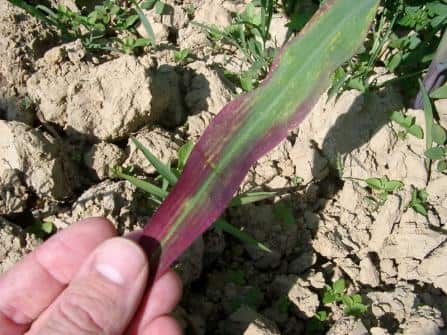Cover Crops: Challenges and Benfits in 2020. Contact your local or state extension service experts for additional information.

An abundance of unharvested 2019 crops, heavy snowfall in some areas last winter, and very wet spring conditions in many areas, resulted in extensive prevented planting acreage in eastern ND and western MN. How can this acreage be managed effectively to have it ready for the 2021 cropping season? Wise use of cover crops is one strategy that can prove beneficial.
Wet soils pose many problems
Heavy rains have kept many prevented plant fields wet all spring and into the early summer. Tillage has been difficult to do, leaving field conditions rutted and heavy corn residue still in place on some fields. Complete tillage as soon as possible to start restoring the best possible seedbed conditions for 2021. This tillage will also help kill weeds before seed production is realized. Chemical applications can be used for weed control but no plants are then present using water from the saturated soil profile. Plant growth can effectively use several inches of stored soil water over the rest of the summer and fall. Unless some of the stored soil water is used there could be risk of delayed planting again in the spring of 2021.
Soil Testing critical for 2021
These saturated soil conditions up to this time have been ideal for nitrogen loss from denitrification or leaching. Consider zone soil sampling because more poorly drained areas of the field may have experienced much more nitrogen loss than better drained or higher elevation areas of the field. Samples from the 0-6” and 6-24” depths are recommended. Choose a highly respected local soil testing laboratory for best results. Soil sampling and testing should be delayed until late summer or fall for most reliable results for the 2021 crop.
Cover crop value on prevented plant fields
Soil water use, weed suppression, stopping soil erosion, and improving soil tilth and health are all potential benefits from cover crop plantings. Cover crops will use several inches of soil water before fall tillage and freeze up. Using a cereal rye that can over winter will help dry the soil even further in early spring. Control the overwintered rye with herbicides in a timely manner. You might fertilize the cover crop with 75 to 100 pounds per acre of 46-0-0 urea. This will ensure robust cover crop growth. Nitrogen utilized by the cover crop will be readily released in time for the 2021 crop to use it.
Many types of cover crop options are available. They include grasses, brassicae types or a mix of both. They have different advantages and disadvantages. Some of the brassicae types may root well enough to reduce compaction that might have occurred in the fall of 2019. A disadvantage of brassicae is that these plant species do not have roots colonized by mycorrhizae that are useful for enhanced soil P uptake. Corn or sugarbeets following an all brassicae cover crop mix may experience “fallow syndrome.” This is most often a severe P deficiency observed for weeks or even a couple of months. This is also known as the “purple corn effect.” This severely reduces crop yields. Including grasses in the cover crop mix will eliminate this problem.

Weed suppression
Grass cover crops, including rye, often help reduce weed growth. This is known as the allelopathic effect. If fields have serious broadleaf weed problems, use a grass cover crop. Then if broadleaf weeds become a problem, selective herbicides can be used.
Information available
Contact your local or state extension service experts for additional information. Your local USDA-ARS offices have expertise and information available as well.





